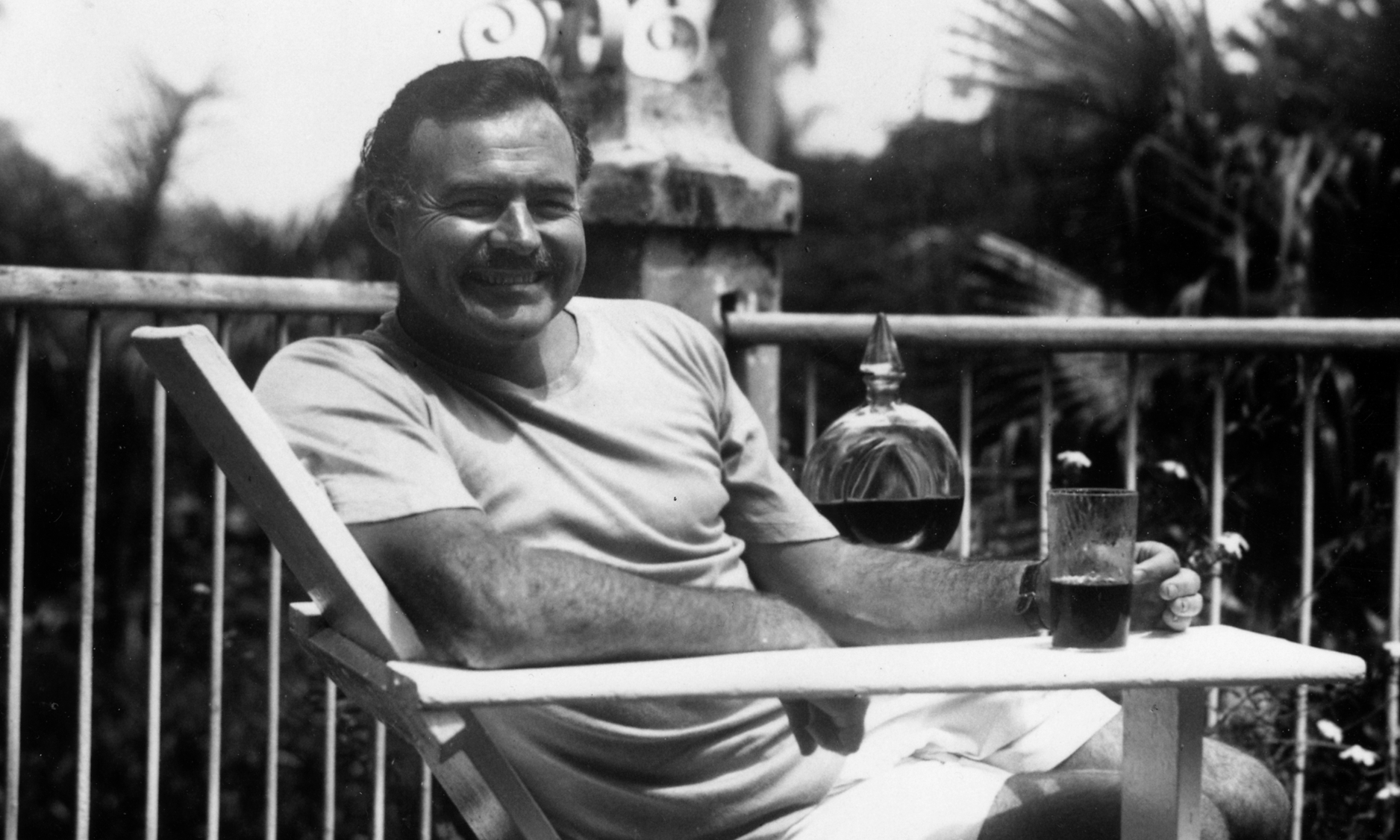
Image via Wikimedia Commons
In 2013, the food writer Cheryl Lu-Lien Tan stumbled across an article in the Boston Globe describing a trove of digitized documents from Ernest Hemingway’s home in Cuba that had been recently donated to the John F. Kennedy Presidential Library and Museum, home of Hemingway’s personal archives. One line in the article caught her eye: “And the more mundane, like his instructions to the household staff, including how to prepare his hamburgers: ground beef, onions, garlic, India relish, and capers, cooked so the edges were crispy but the center red and juicy.”
Tan, a Hemingway fan and the author of A Tiger in the Kitchen: A Memoir of Food and Family, set out to find the recipe and try it. She reported her experiences on the Paris Review Daily blog. “I had made burgers before, countless times on countless evenings,” Tan writes. “This one was different; I wasn’t making just any burger — I was attempting to recreate Hemingway’s hamburger. And it had to be just right.”
Here is Papa’s favorite recipe for pan-fried hamburgers, as reported by Tan:
Ingredients–
1 lb. ground lean beef
2 cloves, minced garlic
2 little green onions, finely chopped
1 heaping teaspoon, India relish
2 tablespoons, capers
1 heaping teaspoon, Spice Islands sage
Spice Islands Beau Monde Seasoning — 1/2 teaspoon
Spice Islands Mei Yen Powder — 1/2 teaspoon
1 egg, beaten in a cup with a fork
About 1/3 cup dry red or white wine
1 tablespoon cooking oil
What to do–
Break up the meat with a fork and scatter the garlic, onion and dry seasonings over it, then mix them into the meat with a fork or your fingers. Let the bowl of meat sit out of the icebox for ten or fifteen minutes while you set the table and make the salad. Add the relish, capers, everything else including wine and let the meat sit, quietly marinating, for another ten minutes if possible. Now make your fat, juicy patties with your hands. The patties should be an inch thick, and soft in texture but not runny. Have the oil in your frying pan hot but not smoking when you drop in the patties and then turn the heat down and fry the burgers about four minutes. Take the pan off the burner and turn the heat high again. Flip the burgers over, put the pan back on the hot fire, then after one minute, turn the heat down again and cook another three minutes. Both sides of the burgers should be crispy brown and the middle pink and juicy.
Spice Islands stopped making Mei Yen Powder several years ago, according to Tan. You can recreate it, she says, by mixing nine parts salt, nine parts sugar and two parts MSG. “If a recipe calls for 1 teaspoon of Mei Yen Powder,” she writes, “use 2/3 tsp of the dry recipe (above) mixed with 1/8 tsp of soy sauce.”
Hemingway’s widow, Mary, published the same basic recipe in 1966 in the sixth volume of the Woman’s Day Encyclopedia of Cookery. The one-pound of beef was intended for only two servings. For more on Hemingway’s hamburger recipe and his culinary tastes, including a fascinating list of gourmet foods he had shipped from New York to his home in Cuba, be sure to read Tan’s article at the Paris Review.
Update: You can also now enjoy Ernest Hemingway’s Summer Camping Recipes.
Related Content:
The Recipes of Iconic Authors: Jane Austen, Sylvia Plath, Roald Dahl, the Marquis de Sade & More
David Lynch Teaches You to Cook His Quinoa Recipe in a Strange, Surrealist Video
How to Actually Cook Salvador Dali’s Surrealist Recipes: Crayfish, Prawns, and Spitted Eggs


Leave a Reply